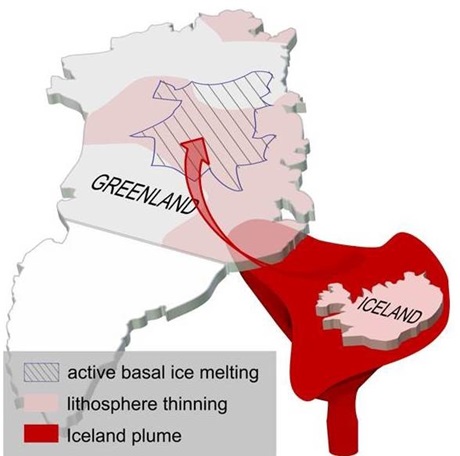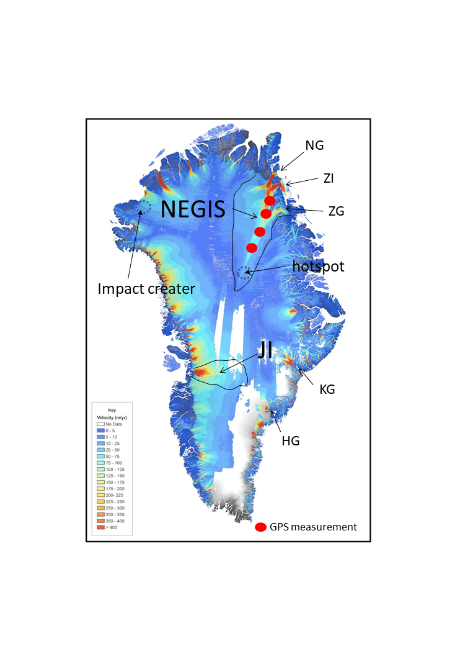Period: 2018-2020
Partners: DTU Space (Abbas Khan & Arne Døssing)
Budget: 500.000 DKK (DTU Space Strategic Grant)
Summary: A critical unknown in climate research is the future behaviour of the Greenland ice Sheet (GrIS). Irreversible changes may be occurring there, which will profoundly affect its contribution to global sea level rise and threaten vulnerable coasts. Reliable predictions can only be made using fully-coupled ice sheet models. Progress towards reducing the uncertainty of ice sheet modelling has been identified as crucial for projection of future sea level and thus society. However, still little is known about the geothermal heat flux at the glacier bedrock, and how it affects dynamics of the major outlet glaciers in Greenland. Recent studies suggest the present-day hotspot under Iceland is thought to have been under eastern Greenland at somewhat 40 Ma BP and speculate that the upwelling of hot material from the Iceland plume towards Greenland and northward may be ongoing, further heating the earth’s upper mantle. If this is true, it may have a large influence on ice sheet and glacier flow dynamics, as a greater geothermal heat flux at the base of an ice mass will impact upon its internal thermal regime and the presence of basal melt water. The onset of increasing flow of the North East Greenland Ice Stream (the largest flow feature of the ice sheet) may be linked to a geothermal hotspot. The Greenland Thermal Anomaly project aims to address key questions related to the understanding of changes in glacier dynamics and “in”-stability of glaciers in east Greenland through high quality, collaborative research using fieldwork, satellite altimetry and modelling studies.

We will investigate melting of the GrIS from below, caused by heat flow from the mantle into the lithosphere. This influence may have a variable spatial pattern and has its origin in a thin lithosphere. The hotspot path may results in lower viscosity and higher geothermal heat flux at the glacier bed. To quantify the mechanisms controlling dynamic changes of the northeast Greenland ice stream (NEGIS) we intend to,
- Conduct high precision GPS measurements on ice along the main flow line of the northeast Greenland ice stream (NEGIS). High precision changes in ice velocities upstream glacier can only be achieved by GPS, as satellite based inland velocity changes are small and too noisy.
- Investigate influence of local heat flux anomalies on glacier dynamics by purchasing and modifying a fixed-wing drone for magnetic surveying in the Arctic and conduct airborne (with drone) magnetic measurements in Greenland with the purpose of mapping both the magnetic basement and Curie temperature along selected profiles.
